Communications and Network
Vol.1 No.2(2009), Article ID:919,9 pages DOI:10.4236/cn.2009.12013
A Multipath Routing Algorithm Based on Traffic Prediction in Wireless Mesh Networks
1College of Computer, Nanjing University of Posts and Telecommunications, Nanjing, China
2State Key Laboratory for Novel Software Technology, Nanjing University, Nanjing, China
E-mail: lizhiyuan81@126.com, wangrc@njupt.edu.cn
Received August 7, 2009; accepted September 2, 2009
Keywords: Wireless Mesh Networks, Non-Linear Traffic Prediction Model, Multipath Routing, QoS
Abstract
The technology of QoS routing has become a great challenge in Wireless Mesh Networks (WMNs). There exist a lot of literatures on QoS routing in WMNs, but the current algorithms have some deficiencies, such as high complexity, poor scalability and flexibility. To solve the problems above, a multipath routing algorithm based on traffic prediction (MRATP) is proposed in WMNs. MRATP consists of three modules including an algorithm on multipath routing built, a congestion discovery mechanism based on wavelet-neural network and a load balancing algorithm via multipath. Simulation results show that MRATP has some characteristics, such as better scalability, flexibility and robustness. Compared with the current algorithms, MRATP has higher success ratio, lower end to end delay and overhead. So MRATP can guarantee the end to end QoS of WMNs.
1. Introduction
Wireless Mesh Networks (WMNs) is a new type of broadband access network, also known as wireless mesh networks or wireless grid networks. Evolved from MANETs and WLANs, WMNs could provide an easy and cost-effective deployment for broad access. WMNs have many advantages which other wireless networks don’t have, such as wide coverage, high reliability, multi-hop routing, self-organization and self-healing function. In addition, mesh routers support multiple types of network access technologies. And a variety of existing wireless networks and the Internet are integrated into a larger Internet by them like gateways. Because of the advantages mentioned above, WMNs are going to play an increasingly important role in the next wireless communication systems. Since 2004, IEEE 802.11 [2], IEEE 802.15 [3], IEEE 802.16 [4] (WiMAX) Working Groups have developed a series of standard protocols that support Mesh topology. Besides, the industry has also started to study mesh network technology. More importantly, Microsoft Research, Intel Lab in the University of California Berkeley and Nortel Networks have developed a variety of products of WMNs and they have achieved great success on markets. It’s obvious that Wireless Mesh Networks as the key technology that can solve the “last mile” problem of the wireless access have been increasingly widespread concerns. Because the core business in WMNs locates in the broadband multimedia services, it requires WMNs to better support QoS than other wireless networks. However, the inherent shortcomings of WMNs, such as dynamic topology, the limitations of mobile terminals and network heterogeneity, make its end-to-end QoS become very difficult and challenging. If the problem is not properly solved, it will block the development of WMNs in future. Multipath routing is a key technology to ensure the packet delivery and load balance in networks. For example, Artigas proposes an approach on how to establish security multipath based on Chord in the mobile P2P networks [5]. In order to improve balance of energy consumption, Lee proposes a splitting multipath routing algorithm for ad-hoc network that can establish and maintain maximum disjoint paths. According to the algorithm, traffic load mainly distributes in two paths in every session [6]. Therefore, the multipath routing based on the traffic is feasible. But the current multipath routing algorithms are not suitable for the WMNs. So we mainly research on the approach of the multipath routing based on traffic prediction.
Network traffic prediction plays an important role in guaranteeing network QoS. The proposed method about traffic prediction mainly includes time series analysis, regression method, gray systematic method, neural network etc. These methods play an important role in solving the specific prediction task. However, the WMNs traffic is complicated and lacks effective mathematical model. The traditional prediction method is difficult to put in practice. In this paper, nonlinear prediction model based on wavelet neural network is modeled by analyzing the characteristics of WMNs traffic. A multipath routing algorithm based on the traffic prediction in Wireless Mesh Networks (MRATP) is proposed to guarantee the end-to-end QoS in WMNs. Our approach on multipath routing is a new attempt.
The main idea of the MRATP is that a primary path and a few backup paths are set up from the source to destination by XOR distance among nodes, the bandwidth and the residual energy. Firstly, a primary path is used to forward streaming media. When any node on the primary path predicts that the network may congest at the next moment by real-time traffic, the notification message that the primary path is about to congest is sent to the source node in advance by these nodes. Then the backup path 1 and 2 are triggered to transmit network traffic by the source node successively. When the congestion and fault conditions alleviate or disappear, disable backup path 1 and 2 respectively. Only the primary path is still used to transmit data. Simulation results show that the traffic prediction model based on wavelet neural network has higher prediction accuracy and the model can predict the real-time traffic of WMNs. Besides, compared with other QoS routing protocols, MRATP can improve success ratio and reduce the end-to -end delay and algorithm overhead by load balancing. Hence, it could guarantee the end-to-end QoS of WMNs.
The rest of the paper is organized as follows. Related works is given in Section 2. The traffic prediction model for WMNs based on wavelet-neural network is built in Section 3. MRATP proposed in this paper is described in detail in Section 4. Then we evaluate our algorithm through simulation in Section 5 and draw a conclusion in Section 6 at last.
2. Related Works
At present, there are more and more literatures on the research of QoS routing protocols in WMNs. However, most of them are improved Ad-hoc routing protocols adapting to WMNs. These QoS routing protocols are classified into three kinds: QoS routing based on single objective optimization, QoS routing based on multi-objective optimization and strategy-based QoS routing.
QoS routing based on single objective optimization is to discover the optimal or sub-optimal routing which meets a certain QoS metrics such as throughput, latency, packet loss rate, energy consumption. The expected transmission count metric (ETX) is modified into the expected data rate metric (EDR) in literature [7]. The metric takes into account the transmission interference of the sharing medium in wireless multi-hop network and the probability of transmitting simultaneously on two non-interfering links. Simulation results show that this method can significantly improve throughput of DSR and DSDV routing protocol. In WMNs, if the node moves from the current Mesh Router to another router, it is necessary to rediscover a new route. But rediscovery leads to extra delay. To solve the problem, literature [8] presents the pre-handoff route discovery (PRD) concept for AODV, which avoids these delays and enables mobile nodes to set up routes in the handoff-target network prior to handoff. Because of time-varying characteristics, the average packet loss rate on wireless channel may be low, but its real-time packet loss rate is very high. Hence, it is clearly unreasonable to use the average packet loss rate as routing metrics. Thus, literature [9] describe two new metrics, called modified expected number of transmissions (mETX) and effective number of transmissions (ENT) that work well under a wide variety of channel conditions. A route with low average packet loss rate and low real-time packet loss rate is selected by the two metrics mETX and ENT under a wide variety of channel conditions. Literature [10] presents an effective heuristic algorithm for calculating end-to-end bandwidth on a path, which is used together with AODV to setup QoS routes, namely BW-AODV. In a QoS guaranteed session, QoS routing seeks a source-to-destination route with requested bandwidth. For this, one-off call admission is introduced. If no such a route can be found, the connection request should be rejected. If there are many candidate routes, the path with widest bandwidth will be selected.
Because of the dynamic characteristic of WMNs, only one QoS metric could not meet the business needs. Hence, QoS routing based on multi-objective optimization is proposed. The QoS routing usually adopts the method of multi-objective integration which combines multi-objective (such as throughput, latency, packet loss rate, energy consumption) into one optimization objective. The optimization of the objective is equivalent to such multi-objective optimization. Optimization objectives often involve the combination of several QoS metrics with additivity or several QoS metrics with multipliable property. The theoretical optimal solution can be got by exhaustive search algorithm. But the problem solving process is a NP-complete problem and its complexity is exponential growth [11]. The Formula (1)  is the objective function of the routing algorithm in literature [12]. Here,
is the objective function of the routing algorithm in literature [12]. Here,  denotes a path from the source node to the destination node.
denotes a path from the source node to the destination node.  and
and  denote bandwidth, latency, packet loss rate and energy consumption respectively.
denote bandwidth, latency, packet loss rate and energy consumption respectively. and
and  denote maximum tolerant delay and energy consumption.
denote maximum tolerant delay and energy consumption.  denote the corresponding weights. The optimal path can be obtained by maximizing the objective function. Ant colony algorithm (ASAR) is used to solve the objective function. Simulation results prove that ASAR algorithm has better convergence and significantly provides better QoS for multiple types of services. Meanwhile, ASAR can greatly reduce the complexity of routing algorithm.
denote the corresponding weights. The optimal path can be obtained by maximizing the objective function. Ant colony algorithm (ASAR) is used to solve the objective function. Simulation results prove that ASAR algorithm has better convergence and significantly provides better QoS for multiple types of services. Meanwhile, ASAR can greatly reduce the complexity of routing algorithm.
 (1)
(1)
Strategy-based QoS routing is to discover the optimal routing which meets QoS needs such as throughput, latency using a QoS routing strategy. Its most prominent feature is to support the heterogeneous WMNs. That is to say, a QoS routing is effectively selected in the heterogeneous WMNs [13–16]. However, QoS routing algorithms proposed in literature [13,14] can only be applied to heterogeneous WMNs which are composed of two simple networks (Ad hoc networks and cellular networks, wireless LAN and cellular networks). Thus, they have considerable limitations.
The proposed algorithm in literature [15] introduces ants encountering scheme to imitate the natural process of information sharing between the individuals of an intelligent swarm. Simulation results show that the routing algorithm works well in terms of speed of convergence and recovery from failure. Moreover, the proposed algorithm adapts to the variable traffic and performs better than other ant-based routing. But the algorithm results in extra control messages. Literature [16] addresses the QoS multicast routing issue in WMNs. Specifically, a novel network graph preprocessing approach to enable traffic engineering and enhance the performance of QoS multicast routing algorithms is proposed. Simulation results show that the approach can significantly improve the performance of QoS multicast routing in WMNs. But constructing the Steiner multicast routing tree is a NP problem, which leads to extra overhead and slow convergence.
In summary, there exist some typical shortcomings for the routing algorithms in WMNs, such as the high complexity, poor scalability, and slow convergence. Furthermore at the time of network congestion or fault, the algorithms can’t deal with the faults immediately. It results in packet loss and poor network quality of service. Hence, a multipath routing algorithm based on traffic prediction (MRATP) is proposed in WMNs to guarantee the network quality of service.
3. Traffic Prediction Model for WMNs
3.1. Traffic Prediction Model Selection
In general, the existing network traffic prediction technologies can be classified into linear prediction and nonlinear prediction. For linear prediction model, ARIMA prediction model and Kalman filter prediction model are very representative. Before using ARIMA model, it should meet a premise condition that the network traffic is subject to wide linear stationary process. But through analysis of the collecting network traffic in WMNs, it’s found that the network traffic shows the following characteristics, such as multi-conformation, selfsimilarity, multi-scale and long-range dependence. Therefore ARIMA prediction model can’t accurately describe all the characteristics of WMNs traffic. Kalman filter model can effectively deal with the system noise and measurement noise, but it’s also unable to accurately describe all the characteristics of WMNs traffic.
So we tried to use non-linear prediction model to predict the WMNs traffic. Non-linear prediction model mainly includes wavelet model and neural network model. Wavelet model can effectively improve prediction accuracy of the network traffic, but it does not have real-time and recursive characteristics. Therefore, wavelet prediction model can not predict real time traffic. Neural network model not only has strong self-learning and self-adaptive ability, but also has non-linear approximation function [17]. But this model has some fatal deficiencies, such as slow convergence and only getting local sub-optimal solution. The combination of the two prediction models, namely wavelet neural network (WNN), shows better performance in training and adaptation efficiency than other neural networks, and it is easy to determine its structure and avoid to settling in local minimum. For example, a wavelet packet multilayer perception neural network is used for time series prediction in literature [18] firstly. A new approach based on wavelet transform and artificial neural network is proposed for power system peak-load forecasting in literature [19]. An adaptive wavelet neural network is proposed for short-term price forecasting in the electricity markets in literature [20]. And the paper proves that the wavelet neural network model has good prediction properties compared to other forecasting techniques, such as wavelet packet multi-layer perception, radial basis function (RBF) neural networks and fuzzy neural network (FNN). Then we try to build a wavelet-neural network traffic prediction model for WMNs. Our contributions consist of two parts. On one hand, conventional sigmoid function in neural network is replaced by wavelet function as incentive function of the hidden layer in neural network. On the other hand, the scale and translation parameters in wavelet model are regarded as the weight value and threshold parameter respectively in neural network.
3.2. Wavelet and WNN
For setting up wavelet neural-network predicting model, we introduce the concept of wavelet and wavelet transform at first. Suppose that the Fourier transform of the square-integrable function  is
is , it satisfies the condition:
, it satisfies the condition:
 (2)
(2)
So function  is the mother wavelet.
is the mother wavelet.
 (3)
(3)
 is the wavelet base which is generated by the mother wavelet and depends on parameters a and b in the formula, a is the translation factor, and b is the expansion factor. Suppose that nonlinear time series transform function is
is the wavelet base which is generated by the mother wavelet and depends on parameters a and b in the formula, a is the translation factor, and b is the expansion factor. Suppose that nonlinear time series transform function is , the wavelet transform is defined as
, the wavelet transform is defined as
 (4)
(4)
For constructing the wavelet/multiwavelets, the multiresolution analysis(MRA)is an effective means. Define
 (5)
(5)

where i is an arbitrary integer from 1 to r and  is the connection. Because the multiscaling functions or the functions have finite support, the approximation of any
is the connection. Because the multiscaling functions or the functions have finite support, the approximation of any  is denoted as:
is denoted as:
 (6)
(6)
The above equation shows that a function can be approximated by orthogonal function sets. Since Equation (6) has a linear-in-parameter structure which can be realized by a neural network, the coefficients  can be regarded as the weights of the neural network,called wavelet neural network(WNN) for r=1, and multiwavelet neural network for r ≥2. The proposed WNN, MWNN is made of three layers: the input layer, the hidden layer, and the output layer. The following theorem is helpful for us to calculate the size of the hidden layer [21].
can be regarded as the weights of the neural network,called wavelet neural network(WNN) for r=1, and multiwavelet neural network for r ≥2. The proposed WNN, MWNN is made of three layers: the input layer, the hidden layer, and the output layer. The following theorem is helpful for us to calculate the size of the hidden layer [21].
Suppose the support of  is
is  and the support of the approximated function F is
and the support of the approximated function F is , then the number of nodes in the hidden layer must be
, then the number of nodes in the hidden layer must be , and the set of the threshold value should be
, and the set of the threshold value should be .
.
3.3. Traffic Prediction Model Using WaveletNeural Network
Wavelet neural network prediction model adopts threelayer structure, as shown in Figure 1.
There are  input for input layer, namely one input containing
input for input layer, namely one input containing  values of the time series. There are
values of the time series. There are  neurons on the Hidden layer. And there is one neuron on the Output layer. The neuron can output the
neurons on the Hidden layer. And there is one neuron on the Output layer. The neuron can output the  th time series prediction value.
th time series prediction value.  which represents the weight value between neuron
which represents the weight value between neuron  on
on  layer and neuron
layer and neuron  on
on  layer.
layer.  represents the
represents the th input of the neuron
th input of the neuron  on
on  layer.
layer.  represents a transfer function on
represents a transfer function on  layer,
layer,  represents the corresponding output on
represents the corresponding output on  layer, namely
layer, namely
 (7)
(7)
 (8)
(8)
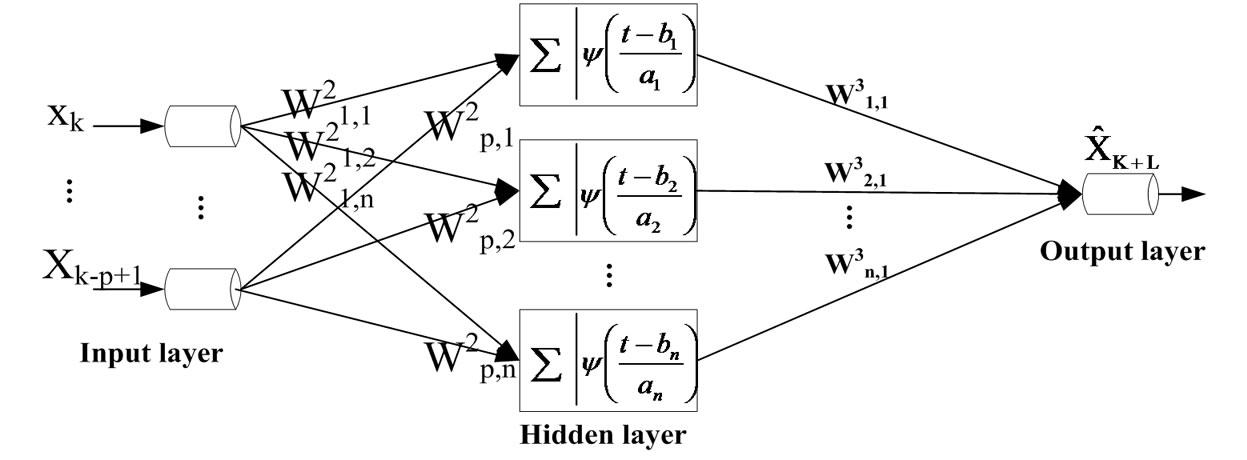
Figure 1. Wavelet neural network structure.
Because of its three-layer structure, we can get ,
, . Morlet wavelet is regarded as transfer function on the Hidden layer, namely
. Morlet wavelet is regarded as transfer function on the Hidden layer, namely
 (9)
(9)
Then, we can get
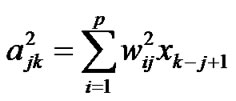 (10)
(10)
 (11)
(11)
 (12)
(12)
 represents the collection of all the parameters in the formulas above. The input of the network is a time series which consists of
represents the collection of all the parameters in the formulas above. The input of the network is a time series which consists of  time series values, namely
time series values, namely , and the output is the
, and the output is the  th step predictive value
th step predictive value .
.
Make mean square error function of the prediction value as the objective function , namely
, namely
 (13)
(13)
In order to get the minimum error and the optimal parameters of the model, conjugate gradient descent algorithm is used to calculate the minimum value of the error function in this paper.
let
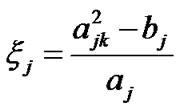 (14)
(14)
 (15)
(15)
First of all, network traffic is collected one time every five minutes and the number is totally 100 times. Then wavelet neural network model is simulated on platform Matlab7.0 and 8-10-1 network structure is used in the model. Finally, initialization parameters are set. The number of steps (T) equals 8, training learning rate (lr) equals 0.01, momentum coefficient (mc) equals 0.95, the biggest training step equals 15000 epochs, training goal equals 0.025.The simulation results are shown in Figure 2 and Figure 3.


Figure 2. One-step prediction.

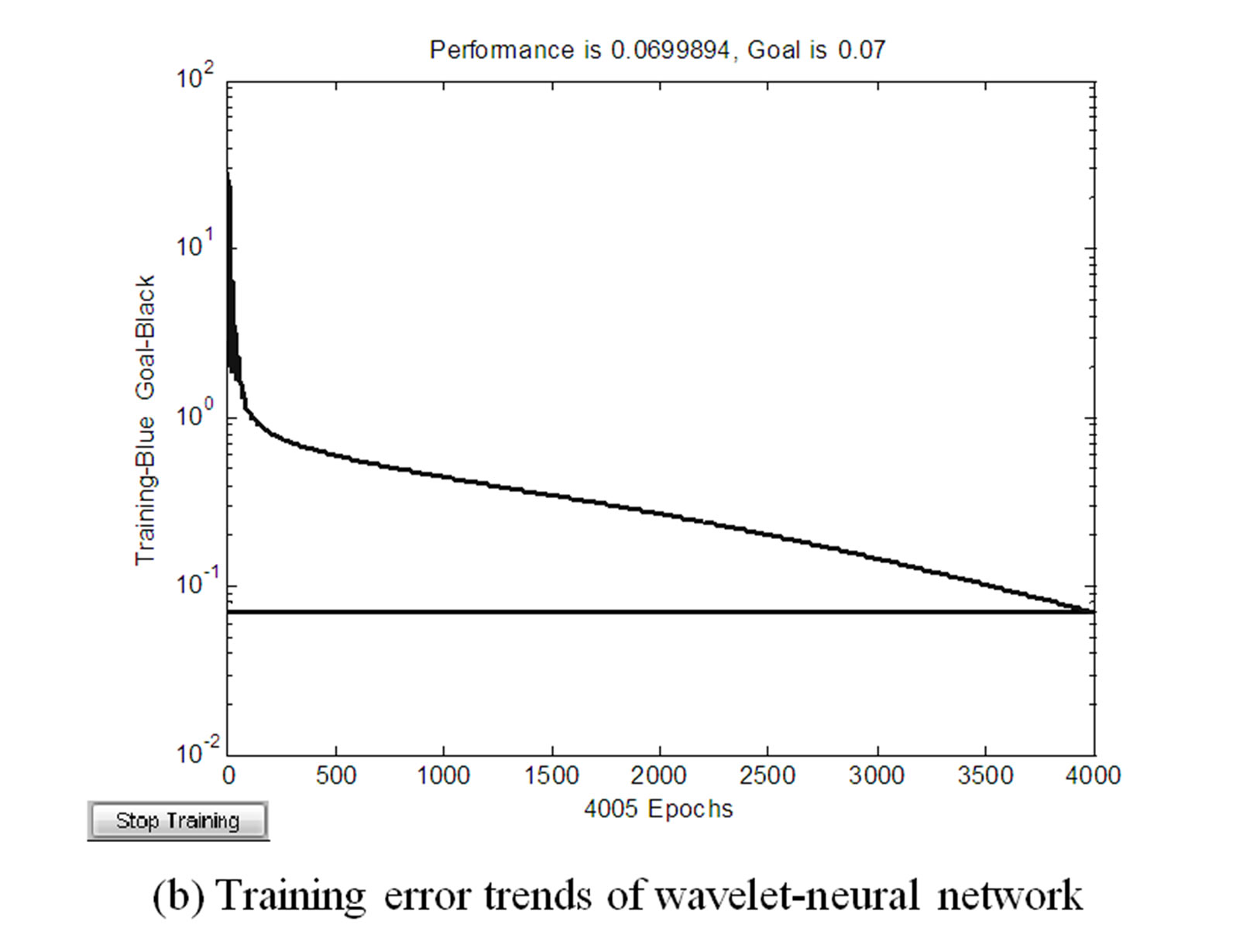
Figure 3. Five-step prediction.
From Figure 2 and Figure 3, we can see that traffic prediction curves generally coincide with the real traffic curve. It is proved that the wavelet neural network prediction model has better prediction accuracy.
4. Multi-Path Routing Algorithm Based onTraffic Prediction Model for WMNs
In order to manage WMNs efficiently and make MRATP more scalable, mesh nodes are deployed by three layer topology as shown in Figure 4. And then these nodes are addressed by IPv4 or IPv6. These nodes in WMNs are classified into Root nodes, Super nodes and Leaf nodes by their abilities. Root nodes not only save the information of the adjacent Root nodes, but also save the information of the Super nodes under their management. Super nodes not only save the information of adjacent Super nodes, but also save the information of Leaf nodes in AS. Leaf nodes only save the information of adjacent Leaf nodes. Firstly, the destination node is located.
If the destination node lies in AS Then set up a route between the source node and the destination node by MRATP algorithm Else recursively search towards nodes on higher level, until you find the destination node And then MRATP algorithm is used to complete routing discovery and reliable streaming media transmission.
The main idea of MRATP is that a primary path and a few backup paths are set up from the source to destination by XOR distance among nodes, bandwidth and residual energy. As shown in Figure 5, path 1 is the primary path, path 2 and path 3 are backup paths respectively. Firstly, the primary path is used to forward streaming media. When any node on primary path 1 predicts that the network may congest at the next moment by real-time traffic, the notification message that the primary path is about to congest is sent to the source node in advance by these nodes. Then backup path 2 is triggered to transmit network traffic by the source node. When the congestion and fault conditions alleviate or disappear, disable backup path 2 and 3 respectively. Only primary path 1 is still used to transmit data. If the source node receives the congestion message from a node on backup path 2, it will activate backup path 3 to transmit traffic.

Figure 4. Hierarchical topology for WMNs.
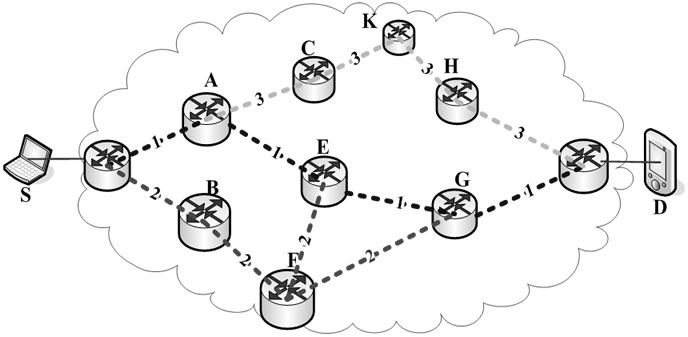
Figure 5. Schematic diagram of multi-path routing for WMNs.
MRATP algorithm is elaborated from the following three aspects: multi-path routing built, a congestion discovery mechanism based on traffic prediction and a load balancing algorithm using multipath routing.
Step 1 Multipath routing algorithm Topology in WMNs is abstracted into a n-node undirected graph G=(V, E). Its adjacency matrix is a n-order square matrix and the element in the matrix.

Make weighted average between bandwidth and the remaining energy
and the remaining energy  as the performance
as the performance of node Vi, namely
of node Vi, namely . Let S denote the source node and D denote the destination node. The pseudo-code of multi-path routing algorithm is described as follows: At first, set up a primary path Input node Vi
. Let S denote the source node and D denote the destination node. The pseudo-code of multi-path routing algorithm is described as follows: At first, set up a primary path Input node Vi
Output next hop Vj
Procedure Nexthop (Vi)
{
For Node Vj ,


}
Input node S, D Output path Procedure Route (S, D)
{
Vtemp= S, path=NULL, i=0
While (Vtemp!= D)
{
path [i]= Vtemp =Nexthop (Vtemp)
i++
}
}
Followed by the previous step, alter the min value as the secondary min value in the procedure Nexthop. And then still make use of the procedure above to obtain the sub-optimal path. Make the sub-optimal path as backup path.
Step 2 Congestion discovery mechanism based on traffic prediction Let random variable X denote network traffic. Let Xi denote network traffic at the i th moment. After the network traffic at the same time within one month was analyzed, we find Xi obeys the normal distribution . The threshold Max is set by the network traffic. Suppose the probability of the t+l step prediction value exceeding the threshold at the current time t as Pt (l) shown in Formula (16).
. The threshold Max is set by the network traffic. Suppose the probability of the t+l step prediction value exceeding the threshold at the current time t as Pt (l) shown in Formula (16).
 (16)
(16)
Here, m is the mean value of m observed values before Xt.


 (17)
(17)

 (18)
(18)

Step 3 Load balancing algorithm using multipath routing When node Vi on the primary path finds the path will be congested at time t+l in the future using Step 2 algorithm, node Vi send notification message to source node S. Then the source node S activates backup path 2 urgently. 3/4 network traffic will be transmitted along backup path 2. The rest 1/4 network traffic will still be transmitted along primary path 1 after the delay τ. With the rapid growth of network traffic, backup path 3 is activated to help transmit data. On the contrary, the backup paths would be disabled, only the primary path is still used to transmit data.
5. Simulation and Analysis
5.1. Simulation Scene and Parameters
Wireless module on NS-2.29[22] is extended to support the simulation of WMNs. Then Ant-based routing, AODV routing protocol based on bandwidth optimization (BW-AODV) and MRATP are implemented on the simulation platform. In order to evaluate the performance of the QoS routing in WMNs, average end-to-end delay and success ratio are chosen as simulation metrics. Success ratio is the ratio of the number of data packets sent to the number of data packets received successfully. Simulation scene and experimental parameters are shown in Table 1. According to the experimental scene and parameters in Table 1, Otcl script is written for the simulation.

Table 1. Simulation parameters.
5.2. Performance Evaluation
In this section, we investigate the performance of the proposed algorithm MRATP with Ant-based routing and BW-AODV for average end-to-end delay, which reflects the ability of convergence. The average end-to-end delay (Tend-end) includes sending delay (Ts), queuing delay (Tq) and transmission delay (Tp). Tend-end is shown in Formula (19).
 (19)
(19)
Here, m is retransmission times. Assume that there are n links from the source node to the destination node, and packet loss rate is p, so we can get 
 (20)
(20)
The average end-to-end delay of MRATP proposed in this paper is shown in Formula (21). Here, M denotes the path number between the source node and the destination node.
 (21)
(21)
Figure 6 compares the average end-to end delay of MRATP with Ant-based routing and BW-AODV. As we can see in Figure 6, average end-to-end delay of the Ant-based routing complies with cyclical variation law that the delay rapidly rises, then rapidly declines and finally stabilizes at a small delay range. The phenomenon is determined by the characteristics of ant colony algorithm itself. Clearly, the performance of the routing algorithm is stable at ideal state. But the performance of the algorithm is instable under the condition of the topology dynamic changes, which shows the algorithm can not guarantee QoS of WMNs. For BW-AODV and MRATP algorithms, their performances are relatively stable. And they do not appear to jitter in Figure 6. The average endto-end delay of MRATP is slightly less than that of BW-AODV. However, when the same amount of data M is sent to the destination end, the total time taken by MRATP is much less than that of BW-AODV because MRATP adopts the method of multi-path streaming mechanism based on traffic prediction.
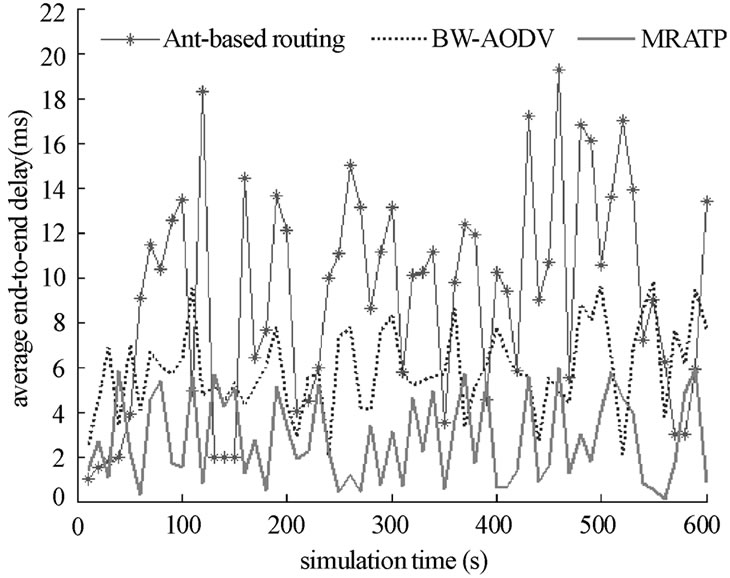
Figure 6. Average end-to-end delay of routing data packets against elapsed time.
Then success ratio of the three kinds of routing algorithm is simulated on the platform from two aspects. One is ideal success ratio under the condition of none nodes or links failure. The other is success ratio under the condition of traffic increasing and node or link failure.
Ideal success ratio against elapsed time is shown in Figure 7. Clearly, the three algorithms have a high success ratio of transmission. However, MRATP has higher success ratio than the other algorithms. At the very beginning of the running, the ant algorithm has a relatively low success ratio, because it needs time to accommodate to the network. And as the proactive ants update the routing table, the success ratio grows up.
Success ratio under the condition of the traffic increasing and node or link failure is shown in Figure 8. The event of the sharp increase traffic at the 100th second and the event of the nodes failure at the 350th second are set in the Otcl script to evaluate self-adaptive and robustness features.
As we can see from Figure 8, transmission success ratio of BW-AODV after 100 seconds has been significantly decreasing and it takes longer time to come back to the normal state. It shows that the algorithm has poor self-adaptive feature. However, the fluctuation of the curves of MRATP in this paper is the smallest among three algorithms. The simulation results and theoretical analysis above prove that MRATP has stronger adaptability and robustness than the others. Hence it can guarantee the QoS routing WMNs.
6. Conclusions
For the deficiencies of the current QoS routing algorithms in WMNs, a multipath routing algorithm based on traffic prediction (MRATP) is proposed in WMNs. Firstly, traffic prediction model based on wavelet neural network is built in this paper, and then MRATP is de-
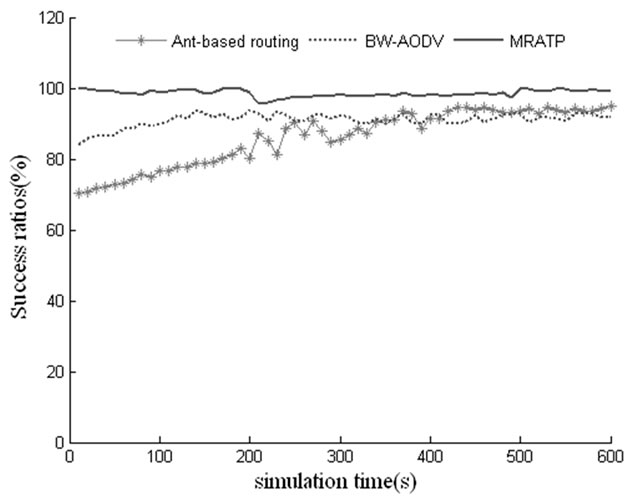
Figure 7. Success ratios against elapsed time.

Figure 8. Success ratios against elapsed time after traffic increasing and node failure.
signed based on the model. MRATP consists of three parts including an algorithm on multipath routing built, a congestion discovery mechanism based on waveletneural network and a load balancing algorithm using multipath. Simulation results show that MRATP has better adaptability and robustness when the link is broken or network is congested. Besides, compared with the current algorithms, MRATP has higher scalability, success ratio and lower end to end delay. So MRATP can guarantee the end to end QoS in WMNs. But MRATP is a QoS routing algorithm which is under the condition of fixed node number and single-channel. So we will further study multi-path routing algorithm under the condition of multi-channel and dynamic topology to ensure QoS in WMNs.
7. Acknowledgments
The authors acknowledge supports from the National Natural Science Foundation of China (60573141, 607730 41), the National High Technology Research and Development Program of China (863 Program) (2006AA01 Z201,2006AA01Z219,2007AA01Z404,2007AA01Z478) and The Provincial Jiangsu High Technology Research Program (BG2006001).
8. References
[1] I. F. Akyildiz, X. D. Wang, and W. L. Wang, “Wireless mesh networks: A survey,” Computer Networks [J], Vol. 47, No. 4, pp. 445–487, 2005.
[2] IEEE 802.11 Standard Group, IEEE 802.11 [EB/OL], 2007, http://www.ieee802.org/11/.
[3] IEEE 802.15 Standard Group, IEEE 802.15 [EB/OL], 2007, http://www.ieee802.org/15/.
[4] IEEE 802.16 Standard Group, IEEE 802.16 [EB/OL], 2007, http://www.ieee802.org/16/.
[5] M. S. Artigas, P. G. Lopez, and A. F. G. Skarmeta, “A novel methodology for constructing secure multipath overlays,” Internet Computing, Vol. 9, No. 6, pp. 50–57, 2005.
[6] S. J. Lee and M. Gerla, “Split multipath routing with maximally disjoint paths in Ad·hoc networks,” Proceedings of IEEE International Conference on Communications, Helsinki, Finland, Piscataway, IEEE, NJ, USA, pp. 3201–3205, June 11–14, 2001.
[7] J. C. Park and S. K. Kasera, “Expected data rate: An accurate high-throughput path metric for multi-hop wireless routing [C],” Second Annual IEEE Communications Society Conference on Sensor and Ad Hoc Communications and Networks, SECON, pp. 218–228, 2005.
[8] S. Speicher and C. H. Cap, “Fast layer 3 handoffs in AODV-based IEEE 802.11 wireless mesh networks [C],” 3rd International Symposium on Wireless Communication Systems, ISWCS’06, pp. 233–237, 2006.
[9] C. E. Koksal and H. Balakrishnan, “Quality-aware routing metrics for time-varying wireless mesh networks [J],” IEEE Journal on Selected Areas in Communications, Vol. 24, No. 11, pp. 1984–1994, 2006.
[10] Z. Xu, C. Huang, and Y. Cheng, “Interference-Aware QoS Routing in Wireless Mesh Networks[C]. In the 4th International Conference on Mobile Ad-hoc and Sensor Networks, (MSN 2008), pp. 95–98, 2008.
[11] N. Mastronarde, Y. Andreopoulos, M. van der Schaar, D. Krishnaswamy, and J. Vicente, “Cross-layer video streaming over 802.11e-enabled wireless mesh networks [C],” IEEE International Conference on Acoustics, Speech and Signal Processing, ICASSP 2006, No. 5, pp. 14–19, 2006.
[12] Y. Sun, H. D. Ma, and L. Liu, “An ant-colony optimiz-ation based service aware routing algorithm for multimedia sensor networks [J],” Acta Electronica Sinica, Vol. 35, No. 4, pp. 705–711, 2007.
[13] K. Yang, Y. M. Wu, and H. H. Chen, “QoS-aware routing in emerging heterogeneous wireless networks [J],” IEEE Communications Magazine, Vol. 45, No. 2, pp. 74– 80, 2007.
[14] L. Badia, M. Miozzo, M. Rossi, and M. Zorzi, “Routing schemes in heterogeneous wireless networks based on access advertisement and backward utilities for QoS support [J],” IEEE Communications Magazine, Vol. 45, No. 2, pp. 67–73, 2007.
[15] P. Daru and X. Bingbing, “An ant routing algorithm for wireless mesh network [C],” In the 7th World Congress on Intelligent Control and Automation, (WCICA 2008), pp. 4595–4599, 2008.
[16] R. Bo, Q. Yi, L. Kejie, and R. Q. Hu, “Enhanced QoS multicast routing in wireless mesh networks [J],” Vol. 7, No. 6, pp. 2119–2130, 2008.
[17] L. P. Wang and X. J. Fu, “Data mining with computational intelligence,” Springer, Berlin, 2005.
[18] L. P. Wang, K. K. Teo, and Z. H. Lin, “Predicting time series with wavelet packet neural networks,” Proceedings of IJCNN 2001, pp. 1593–1597, 2001.
[19] J. C. Lu, Z. H. Gu, and H. Q. Wang, “Research on the application of the wavelet neural network model in peak load forecasting considering of the climate factors,” Proceedings of the Fourth International Conference on Machine Learning and Cybernetics, IEEE, Guangzhou, China, August 2005.
[20] N. M. Pindoriya, S. N. Singh, and S. K. Singh, “An adaptive wavelet neural network-based energy price forecasting in electricity markets,” IEEE Transactions on Power Systems, Vol. 23, pp. 1423–1432, 2008.
[21] J. C. Knight, E. A. Strunk, and K. J. Sullivan, “Towards a rigorous definition of information system survivability,” Proceedings of the DARPA information Survivability Conference and Exposition (DISCEX’03), Washington, D.C., IEEE Computer Society, USA, Vol. l, pp. 78–89, April 22–24, 2003.
[22] Network simulator ns-2 [EB/OL, http://www.isi.edu/nsnam/ns/.

